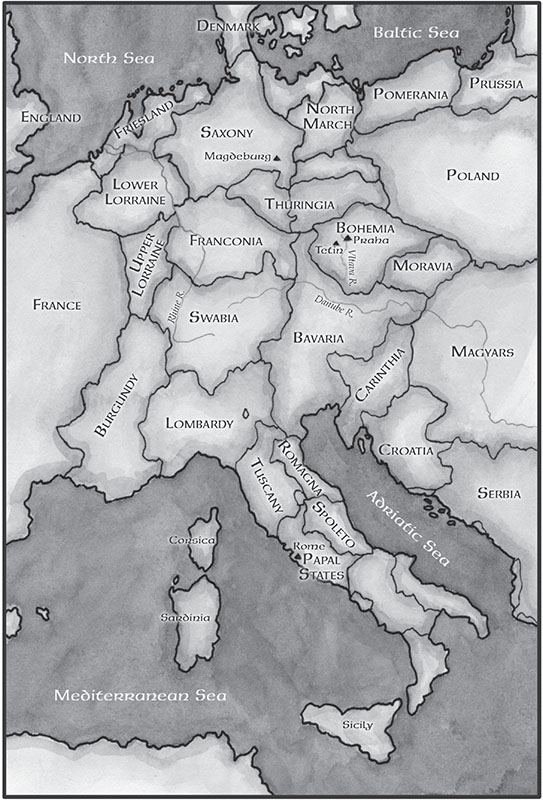
Bavaria (buh-VAIR-ee-uh): A Germanic country bordering Bohemia on the west
Bohemia (boh-HĒ-mē-uh): A land of Eastern Europe now in the Czech Republic
Čech (CHEK): A tribe of people living in Bohemia
Drudge: An unskilled kitchen slave responsible for the lowliest tasks
Fortnight: Two weeks or fourteen days
Levý Hradec (LEH-vya HRAH-dets): Site of first church in Bohemia, about 10 kilometers or 6.2 miles from Praha
Magyars (MOD-yars): People from what is now Hungary
Midden (MID-in): Place where all the human filth and refuse of the castle was collected; someone was required to muck it out once a year
Moravia (moh-RAH-vee-ah): A Slavic country to the east of Bohemia
Praha (PRAH-hah): Capital of Bohemia/today’s Czech Republic, known in English as Prague
Saxony (SAX-suh-nee): A Germanic country bordering Bohemia on the northwest
Scullion (SKULL-yuhn): A servant who scrubs floors or kitchen kettles
Tetín (TEH-teen): Castle where the Duchess Ludmila lived
Trencher bread: Bread used as a plate, common from the early Middle Ages
Vltava (VUHL-tah-vah): A river flowing through Praha/Prague. Known today by its German name, the Moldau.
Voyvode (VOY-vohd): A warlord or chieftain of the Čechs, in later times a noble

CENTRAL EUROPE IN THE 10TH CENTURY